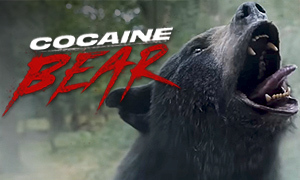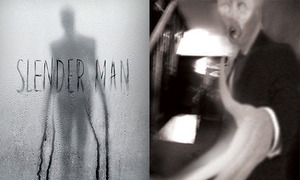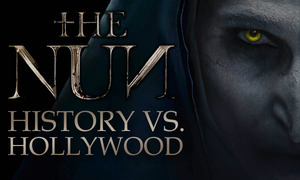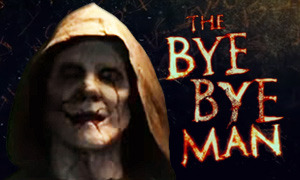Cocaine Bear: History vs. Hollywood
Movie Bear (CGI)
Cocaine Bear (aka Pablo EskoBear)
Birthplace: USA
Currently on Display at the Kentucky for Kentucky Fun Mall
Matthew Rhys
Born: November 8, 1974
Birthplace:
Cardiff, Wales, UK
Andrew C. Thornton II
Born: October 30, 1944
Birthplace: Bourbon County, Kentucky, USA
Death: September 11, 1985, Knoxville, Tennessee, USA (parachute complication)
Is Cocaine Bear based on a true story?
After the movie trailer went viral online, many people started asking, "What is the story behind Cocaine Bear?" While the movie was inspired by an actual black bear that ate a significant amount of cocaine, that's pretty much where the similarities between the film and real life end. In the following questions, we'll reveal the Cocaine Bear true story, including whether there were any real Cocaine Bear victims and what ended up happening to the bear, which was later nicknamed "Pablo EskoBear."
When and where did Cocaine Bear happen?
The real-life events unfolded in 1985 in both Knoxville, Tennessee and Northern Georgia's Chattahoochee National Forest. The film is in line with this and is described as being set in the Chattahoochee Forest, in addition to a nearby Georgia town.
Where did the cocaine come from?
In September 1985, narcotics officer and drug dealer Andrew Thornton (portrayed by Matthew Rhys in the movie) and his karate instructor, Bill Leonard, were on their way back from picking up 400 kilos of cocaine in Columbia (Leonard later claimed he wasn't made aware of the plan until mid-flight). A Cocaine Bear fact-check reveals that somewhere over Florida, they heard federal agents on the radio talking about following their plane. It was then that the two men considered jumping.
They first dumped three duffel bags of cocaine from the Cessna 404 before Thornton tied the last duffel bag of coke to his body. It contained roughly 35 kilos. He also attached a nylon bag to himself that contained night-vision goggles, two pistols, a survival knife, and roughly $4,500 in cash. After having given his friend Bill Leonard a four-minute crash course in skydiving, the intention was for Thornton and Leonard to parachute down and allow the plane to run on auto-pilot until it crashed; thus escaping the federal agents that were tracking the plane.
Leonard jumped out of the plane first and his parachute opened. Unfortunately for Thornton, things didn't go as planned and he failed to get his parachute to work properly, likely due to the weight of the cocaine. He plunged into the ground in a free fall, dying from the impact. Andrew Thornton's body was discovered in the driveway of South Knoxville resident Fred Myers, not far from Knoxville's Island Home Airport. Like in the movie, which you can watch here, Thornton was wearing a bulletproof vest, khakis, and Gucci loafers. The plane crashed more than 60 miles away in Tusquitee Bald Mountain in Clay County, North Carolina. A key found in Thornton's pocket matched the tail number of what was left of the Cessna.
Georgia Bureau of Investigation officers began to search for Thornton's cocaine parcels, figuring there was more than the duffel bag with 35 kilos lying near his body. Three months later, in December 1985, they came upon a dead black bear near a duffel bag in Northern Georgia's Chattahoochee National Forest. -Knoxville News Sentinel
Are the characters in Cocaine Bear based on real people?
The only character who appears to have been based on a real person is Matthew Rhys' character, Andrew C. Thornton II, a corrupt narcotics officer who was the leader of the Kentucky drug-smuggling ring known as The Company. As stated above, Thornton died while attempting to parachute from his plane after returning from a smuggling run to Colombia.
In real life, actor Matthew Rhys is married to his costar in the film, Keri Russell (Felicity, The Americans), who portrays the fictional character Colette Matthews. Other fictional characters include those portrayed by O'Shea Jackson Jr., Alden Ehrenreich, Jesse Tyler Ferguson, Margo Martindale, and the late Ray Liotta.
What kind of bear was Cocaine Bear?
Like in the film, the real Cocaine Bear was an American Black Bear, which is endemic to North America. There are an estimated 750,000 black bears in North America. They are not considered to be endangered.
How much did Cocaine Bear weigh?
The 500-pound bloodthirsty black bear in the movie that kills tourists, townsfolk, criminals and cops is an exaggerated version of the real-life bear, which weighed 175 pounds. That's not to say it's not possible for a black bear to weigh as much as the bear in the film. In fact, adult males can weigh anywhere from 130 to 660 pounds. Adult females weigh 90 to 175 pounds. Their sizes fluctuate with regard to age, the season, and their health. -The New York Times
How did Cocaine Bear die?
The Cocaine Bear true story confirms that the black bear died from a cocaine overdose. The duffel bag that the bear got into contained roughly 88 pounds of cocaine with a total value of $2 million. "The bear got to it before we could, and he tore the duffel bag open, got him some cocaine and OD'd (overdosed)," Georgia Bureau of Investigation officer Gary Garner said at the time. "There's nothing left but bones and a big hide." Other duffel bags full of cocaine were found nearby. The uncut cocaine was wrapped in plastic and marked "USA". -AP
How much blow did Cocaine Bear eat?
The 40 plastic containers of cocaine that had been in Andrew Thornton's duffel bag were found opened and scattered over a hillside in the mountains of the Chattahoochee National Forest in Fannin County, Georgia, not far from the Tennessee border. Traces of cocaine were found inside the opened containers. While we know the bloodthirsty rampage and Cocaine Bear's victims in the film are entirely fictional, it's unclear how the real-life bear behaved from the moment he started eating the cocaine until the moment he OD'd. Unlike what's seen in the film, no one was present in real life to witness it. However, it is possible that the bear didn't eat all of the cocaine before it died and enterprising humans stumbled upon it and took the rest.
In answering the question, "How accurate is Cocaine Bear?" we learned that Georgia's chief medical examiner at the time, Dr. Kenneth Alonso, performed an autopsy on Cocaine Bear's body and reported that the animal had absorbed at least three or four grams of cocaine into its bloodstream, but had possibly eaten more (The New York Times). The autopsy revealed that the bear had suffered from every issue you'd expect with a massive cocaine overdose, including respiratory failure, cerebral hemorrhaging, renal failure, hypothermia, heart failure, and stroke (Knoxville News Sentinel). The autopsy left a jagged scar across the bear's stomach, which was still visible after it was taxidermied.
Did Cocaine Bear kill anyone?
No. As far as we know, Cocaine Bear's victims throughout his life were probably limited to insects and the occasional fish, in addition to plenty of plants and possibly some human food remnants and garbage. Unlike the murderous rampage that the coked-out bear goes on in the horror movie, there is no evidence that the real Cocaine Bear ever killed a human. Stating that the movie is heavily fictionalized is a bit of an understatement.
How often do black bears kill humans?
Unlike the many Cocaine Bear victims in the movie, a black bear killing a human is not common. While researching the Cocaine Bear true story, we learned that according to the North American Bear Center, there are approximately 750,000 black bears in North America, and, on average, less than one person per year dies in a black bear attack. Rather than the bear hunting down humans as food, attacks are commonly defensive reactions to someone getting too close, which is a rather easy scenario to avoid in most cases. As of 2022, black bears have only killed 61 people in North America since 1900. You're significantly more likely to die from bees, a lightning strike, or be killed by another human.
Unfortunately, movies like Cocaine Bear will undoubtedly spark the Jaws effect in some people. Similar to how Steven Spielberg's shark movie triggered a fear of going into the ocean that wasn't based on actual statistics (sharks kill on average one person every two years in the U.S.), Cocaine Bear will likely cause some people to think twice about entering the forest. And the chance that a bear a person might encounter will have just eaten a duffel bag full of cocaine is about zero, not that it would cause the reaction observed in the movie.
Where is the real Cocaine Bear?
Two months prior to the movie's release, the Cocaine Bear taxidermy was on display at the Kentucky for Kentucky Fun Mall in Lexington. The name tag hanging from the taxidermied bear read "Pablo EskoBear," a fitting name for the animal that met its end by gorging itself on a dirty cop's blow. According to the mall's blog, the animal had passed through several different owners.
While conducting our Cocaine Bear fact-check, we discovered that following its autopsy in 1985, the bear was sent to a taxidermist to be stuffed. It was then donated to the Chattahoochee River National Recreation Area. From there, it ended up in a pawnshop where it was purchased by country music singer Waylon Jennings, who gifted it to his friend, Ron Thompson, who lived in Las Vegas. Upon Thompson's death in 2009, it was sold when his estate was auctioned. Zhu T'ang, the owner of a Chinese medicine shop in Reno, purchased the bear for $200 and used it as a decoration in his store. When T'ang died in 2012, his wife sold the shop but kept the bear. The Fun Mall tracked down the bear and contacted her. She agreed to let them have it if they paid for shipping.







